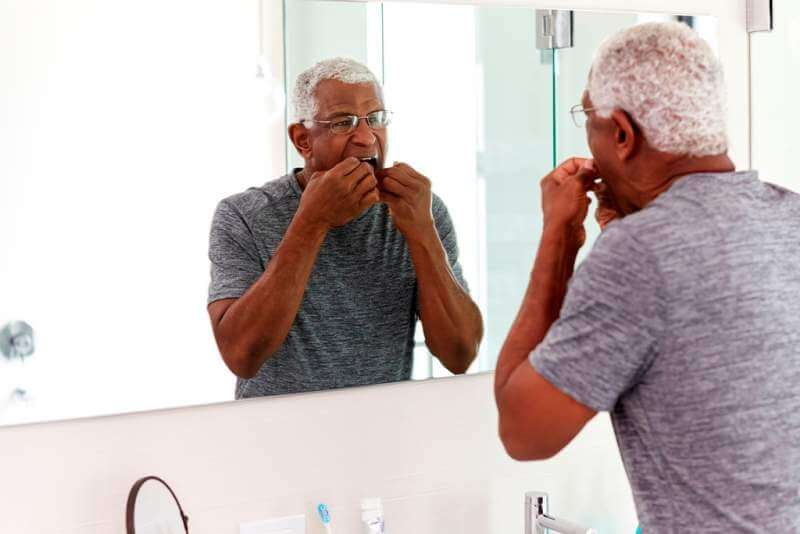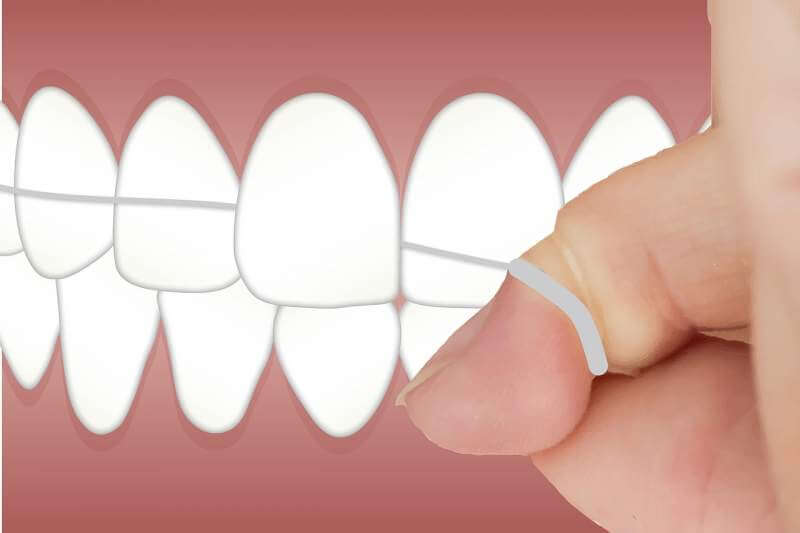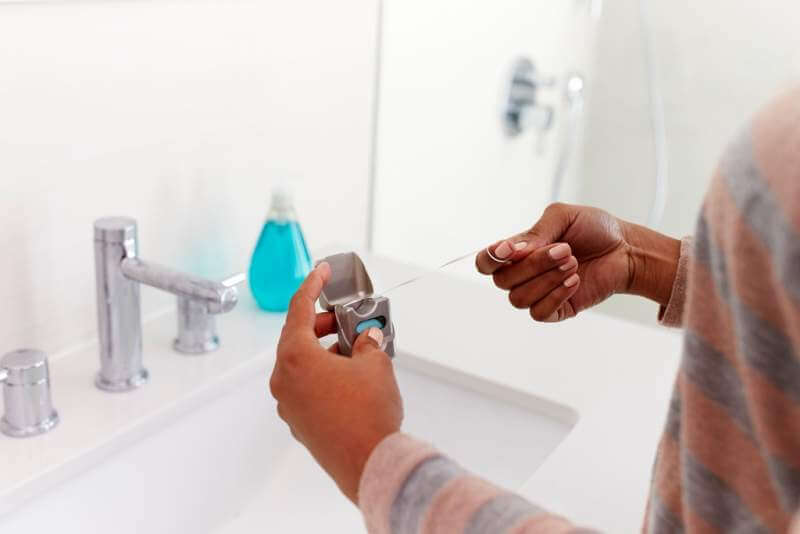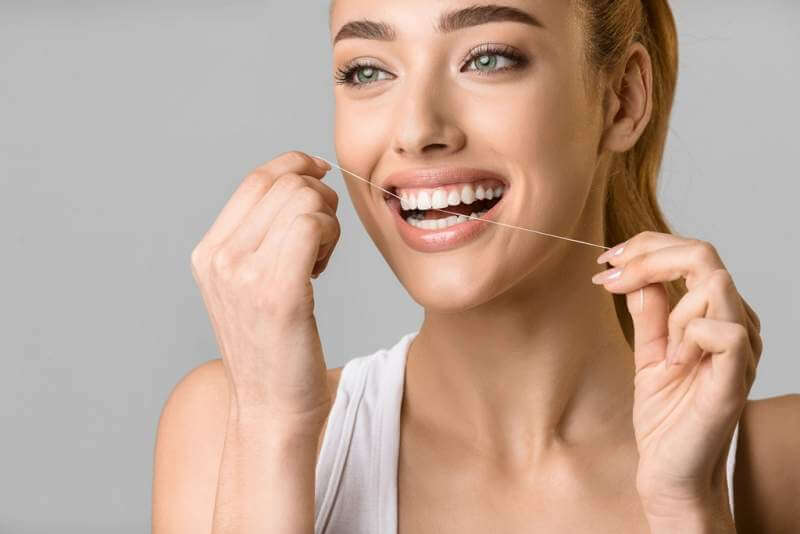Do you visit your dentist for a routine checkup? If yes, he might have told you the importance of brushing and flossing your teeth. If you skip flossing your teeth, you are no different from other patients.
People skip flossing because they presume it to be less beneficial or important as compared to brushing. Everyone knows that brushing helps in maintaining healthy teeth. But what about flossing? Flossing fights against bacteria, plaque and protects your teeth from other diseases. Plaque gets accumulated on the surface of the gum line. It releases acid that results in cavities. These cavities weaken the gums, cause tooth decay and gum diseases and they are REALLY very painful.
Most individuals are unaware that a tooth has many surfaces and is not as simple as it looks from the outside. If you neglect to floss, you leave some areas unclean. A brush cannot always remove the bacteria present in the crevices of teeth, i.e. the spaces between the teeth. What is the alternative then? The simple answer is using a floss. Flossing removes the bacteria present between the teeth. It protects your teeth from infections and diseases.
A dazzling smile enhances your appearance. To maintain that beautiful smile, floss regularly after brushing your teeth. Whenever you feel like skipping it, remember the adverse consequences that follow from gum diseases. These diseases cause several dental health problems. These dental health problems may affect your overall health in the longer run. Hence, to save yourself from this situation include flossing in your daily routine.
When to Start Dental Flossing?

Do you remember your parents teaching you how to floss? If not, then you probably started very late or didn’t start at all. Dentists recommend that a child should start flossing once he turns 2. But this is not always the case. Some dentists advise that your child should begin flossing when he has five or more teeth. When you teach your child to floss, do it under his dentist’s supervision. You can also rely on his primary care provider to guide you.
A dentist will teach you the proper technique to assist your child in flossing his teeth. If you don’t stick to his directions, you might end up injuring your child. Do not attempt to floss your child’s teeth forcefully. If he is reluctant in the initial phases, allow him to get accustomed. Also, do not start with flossing until he turns 2. It’s because flossing is not required before this period. Your child will rely on you for flossing until he turns 9 or 10. It’s because it is not easy to learn to floss. Also, your child will follow your footsteps. Hence, ensure that you floss daily after brushing your teeth. Once he inculcates this habit, it will stick with him until the end. It will be worth all your efforts.
Proper Flossing Techniques
 Flossing is not only a habit to be incorporated in your routine. It is also important that you follow the proper technique to floss your teeth. Ask your child’s dentist to teach you and your child the right technique. There are several methods to floss the teeth. These methods are mentioned as follows:
Flossing is not only a habit to be incorporated in your routine. It is also important that you follow the proper technique to floss your teeth. Ask your child’s dentist to teach you and your child the right technique. There are several methods to floss the teeth. These methods are mentioned as follows:
- Finger-wrap method
Take a 20 inches long floss to be used by your child. Wrap the floss completely on both the middle fingers of your child. Ask him to use his index fingers to move the floss in between his teeth. Move your index finger and thumb in an up and down fashion. Ask your child to follow suit. Your child may attempt to move his fingers in a side to side motion. Discourage him from doing so. Do not leave out the gum line. - Circle Method
Take a 20 inches long floss and bind it in a form of a circle. Make use of your index fingers to start flossing from the bottom teeth. Use the thumbs to repeat the exercise from your upper teeth.
You may find the process of cutting the floss into pieces too cumbersome. You can go for pre-threaded flosser. You can also opt to buy floss holder. If your child has trouble flossing his teeth, pre-threaded flosser will come to his rescue. Even you will find it more convenient while teaching your child how to flossing. The only factor that differs here is expenditure. Where purchasing a floss holder may come across as expensive, it will be convenient. You won’t regret investing your money on it or pre-threaded flosser.
Types of Dental Floss
 Whenever you visit a dentist for a checkup, he may ask whether you floss or not! If yes, he may ask you about the kind of floss that you prefer. Generally, dental health specialists do not ask the second question. But it is important to know whether you use the right floss or not. If you aren’t aware of different kinds of floss, this is the opportune moment. Here are the descriptions of different kinds of floss with their pros and cons-
Whenever you visit a dentist for a checkup, he may ask whether you floss or not! If yes, he may ask you about the kind of floss that you prefer. Generally, dental health specialists do not ask the second question. But it is important to know whether you use the right floss or not. If you aren’t aware of different kinds of floss, this is the opportune moment. Here are the descriptions of different kinds of floss with their pros and cons-
- Unwaxed Floss– This kind of floss comes without a variety of flavours. They are made from nylon strands.
Pros: It’s easy to use. Children can hold in without any issue. If your teeth are packed in closely without much space, this will be a good option.
Cons: It is not sustainable for long term use. The strands may snap while you are using them. - Waxed Floss- Though they are similar to unwaxed floss, they have a wax coating. They are available in two or three flavours.
Pros: With the waxed coating on the thread you can easily use it between your teeth. They do not snap while in use, unlike unwaxed floss.
Cons- It does not easily fit into small gaps. Because of a wax coating, you might not be able to hold it easily. - Dental Tape- This kind of floss is available in both waxed and unwaxed form.
Pros: If you have large gaps between your teeth, you can use this floss easily. It is thick in shape. It is long-lasting and does not break easily.
Cons- If you have overlapping teeth or small gaps between your teeth, don’t go for this. It is only suitable for people with wider gaps between their teeth. - Natural & Biodegradable Floss- As the name suggests, this floss is eco-friendly.
Pros: It is made of silk and gets decomposed.
Cons- Because silk is used for the preparation of this floss, it affects the animals that produce silk. They are exploited for silk extraction in large quantities.
There are several other kinds of dental floss such as super floss, electric flosser, a water flosser, etc.
Benefits of Dental Flossing
 Many people skip flossing because they don’t know the benefits it entails. Here are certain benefits of flossing that you should be aware of:
Many people skip flossing because they don’t know the benefits it entails. Here are certain benefits of flossing that you should be aware of:
- A large number of bacteria reside between your teeth. No matter how efficiently you brush your teeth, these bacteria are hard to remove. At times, even food particles get wedged between the surface of your teeth. Flossing helps to remove these food particles and bacteria from such areas. It stops the bacteria from taking the shape of plaque that causes gum diseases.
- Plaque gets accumulated on the surface of teeth if not looked after. When it is left untreated for some time, it hardens into tartar. Flossing your teeth regularly will help you in getting rid of plaque.
- When food particles get wedged between teeth, they emanate bad breath in the longer run. To prevent such a situation from arising, floss your teeth daily.
- Brushing and flossing go hand in hand. To take proper care of your teeth, don’t skip flossing even for a single day. Flossing can help you access areas that are unreachable through brushing.
There are many more benefits of flossing. No matter what, include flossing an important part of your dental care. After all, you would not want you dazzling smile to fade away, would you? Dentique, a leading dental clinic in MG road, Ernakulam will floss your teeth and show you the proper way to floss your teeth at home for a better dental care.
